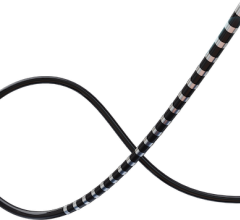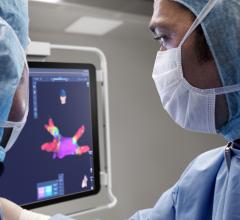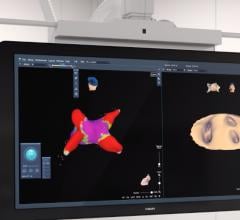December 2, 2013 — Topera Inc. shared the results of an independent evaluation of its diagnostic system’s ability to improve
atrial fibrillation (AF) outcomes by identifying of the sources that sustain complex cardiac arrhythmias. The results of the study “Ablation of Atrial Fibrillation Rotors and Focal Sources Improves Outcome Over Conventional Ablation Alone in Independent Laboratories: Multicenter Validation of Focal Impulse and Rotor Modulation (FIRM),” were presented at the American Heart Association Scientific Sessions 2013 Conference in Dallas by John Miller, M.D., director of Clinical Cardiac Electrophysiology, Krannert Institute of Cardiology, Indiana University and lead author of the study.
“Maintaining one year freedom from AF in more than 80 percent of patients after a single procedure is highly unusual and achieving this result in this largely persistent AF population is frankly remarkable,” said Professor Miller. “These patients have historically responded poorly to therapy and are our most challenging AF patients to treat. Now, guided by Topera’s 3-D
mapping system, we have an effective approach to help them. After two years using the mapping system and monitoring these patients for the past year, it's heartening to see our hopes for, and early experiences with, this technology finally result in excellent long-term outcomes."
Study design:
- One hundred forty-nine patients in a comparative study from 11 U.S. centers in 10 states
- Seventy-eight AF patients from 10 independent centers in the FIRM-guided (active) arm with a ratio of 70.5 percent persistent to 29.5 percent Paroxysmal AF
- All patients underwent evaluation and follow up for at least one year
- Patients receiving FIRM-guided care were compared to 71 control arm patients where RhythmView was not used and only standard of care mapping and ablation were employed
- Single procedure results were reported, as repeat procedures were considered a failure in outcome, even if during the initial three-month post-procedure period
Topera did not participate in the data gathering, evaluation or analysis of the data and did not provide sponsorship or support for the study by these investigators.
Study results
Independent centers experienced very similar results to those reported in the original CONFIRM trial. Rotors and focal sources that sustain cardiac arrhythmias were identified in 100 percent of patients, and 50 percent of these patients had rotors in the right atrium, an area in the heart not historically believed to contain sources sustaining atrial fibrillation. 80.5 percent of patients experienced freedom from AF over one year following a single procedure.
“This is the third major clinical study that has evaluated the Topera 3D mapping system’s ability to help electrophysiologists identify the sources sustaining complex arrhythmias,” said Ruchir Sehra, M.D. and chief medical officer, Topera. “These studies have consistently demonstrated long-term freedom from AF in excess of 80 percent when our diagnostic mapping system was used. This is now the second study to demonstrate that these remarkable results can also be achieved by physicians in laboratories, independent of the company or the founding inventor.”
About the RhythmView Workstation and FIRMap catheter
Using electrograms captured with the FIRMap panoramic contact-mapping basket catheter, the RhythmView Workstation then provides electrophysiologists with a dynamic representation of the electrical activity of the heart. Clinicians can then use this diagnostic information to tailor therapy for excellent patient outcomes. Topera’s 3D Mapping System is the first diagnostic tool designed to identify the patient specific, unique electrophysiologic source that sustains serious heart rhythm disorders.
The Topera 3D Mapping System, which consists of the RhythmView Workstation and the FIRMap diagnostic catheter, is designed to improve patient outcomes by enabling electrophysiologists to view a dynamic representation of the electrical activity of the heart, supporting the diagnosis of and treatment planning for a variety of arrhythmias including atrial fibrillation, atrial flutter, atrial tachycardia and ventricular tachycardia.
For more information: www.toperamedical.com



 September 05, 2025
September 05, 2025 









